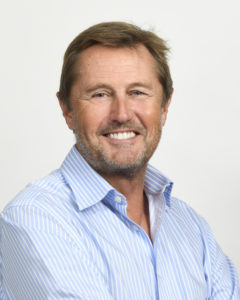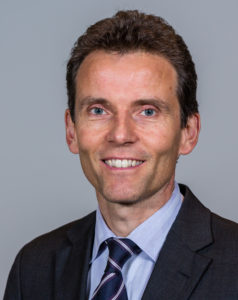

Reinsurance price hikes and capacity changes are not reminiscent of prior hard markets, participants said in quasi-Rendez-Vous meetings, with some going as far to say that current price changes are not enough to keep up risks.
Separately, reinsurance executives speaking publicly on virtual media events that also took place around the usual time of the Rendez-Vous de Monte Carlo gathering bluntly said reinsurance price increases must continue in 2021 and perhaps beyond. (Related article: What to Expect in 2021: Reinsurance Market Moves from ‘Timid’ to ‘Hard,'” publishing Wednesday.)
David Brown, chair of Hamilton Re in Bermuda, who at the time of his CM interview was also serving as interim CEO for the specialty insurance and reinsurance company, responded to a question about relative changes in the primary and reinsurance markets—and, in particular, to the idea that improvements on the primary side might be more robust—stating, “I don’t think I’m ready to say any markets are hard yet. A hard market is when business doesn’t get placed.”
“But I think it’s certainly hardening,” the nearly 30-year veteran of the industry continued. “It’s like always in this business. It’s sporadic. Different markets are seeing different reactions. Some markets are seeing continual hardening, and it’s been like that for several quarters now—consistent rate increases, some of them very large.”
“Generally we’ve seen more consistency on the insurance side in rate increases,” he said, agreeing with an assessment of relative improvements offered for his consideration. “We’re also seeing it flow through to reinsurance in some areas. In others, not so much yet.”
He concluded, “We’re seeing rate increases consistently, but the rates are still not a level where I consider them to be hard or even really attractive.”
Amanda Nguyen, U.S. Casualty Solutions leader for Reinsurance within Aon’s Reinsurance Solutions business, sees differences in the insurance and reinsurance markets as well. Nguyen, who spoke to CM about the impact of social inflation on the casualty market—and the possibility that a short-term deflation in the numbers and amounts of casualty claims coinciding with COVID court shutdowns is a prelude to a worsening claims environment moving forward—said that the “massive” increases in original casualty insurance rates are still making everyone comfortable at the moment. (Related article, “Casualty Re Market ‘Rational’ Despite Likely COVID Whiplash on Social Inflation“)

“We’re seeing rate increases consistently, but the rates are still not a level where I consider them to be hard or even really attractive.”
David Brown, Hamilton Re
“While [reinsurers] are having to make sure that they can be profitable, I think they are quite energized by what they’re seeing in the original rate environment, especially where they’re supporting pro-rata programs,” Nguyen said.
“There are definitely, no doubt, loss-impacted programs [that] are going to see the more challenging outcomes,” she added. “But what is most important to take away from a discussion of the reinsurance rate environment is that reinsurers, by and large, are distinguishing well-performing books from stable books from underperforming books,” she said.
Reinsurers that don’t do this, she suggested, “put themselves at risk of losing the very cedents that they want to support because these companies are becoming very financially well-heeled and very confident in their own business.”

“Reinsurers, by and large, are distinguishing well-performing books from stable books from underperforming books”
Amanda Nguyen, Aon Reinsurance Solutions
In a separate interview with CM, Chirag Shah, executive vice president for casualty reinsurance at Willis Re, noted that demand for casualty reinsurance is increasing—”fueled by the fact that reinsurers, despite hardening conditions, are willing to offer clients more solutions to address their evolving needs.” (Listen to related podcast, “Re/Insurance Liability Trends During the COVID-19 Crisis“)
“Depending on what the client’s concerns are, whether it be capital-related or earnings volatility management, reinsurers are able to design more bespoke reinsurance structures,” he said. “In a true hard market, it would be effectively just one-size-fits-all for every carrier, which might lead to a diminishing demand for reinsurance,” Shah said. “What we have is still a very robust reinsurance market where reinsurance capacity is plentiful and they’re willing to offer optionality on structures”—even products to address casualty clash risk and systemic risk, he said.
Nguyen was similarly upbeat. “While there are certainly challenges and concerns and headwinds—and COVID is a great unknown—there’s a lot of excitement and energy and positivity around differentiating clients and creating a market that’s there for a long time to support clients in the casualty marketplace,” she concluded.
Given the brokers’ comments, CM wondered whether it would be correct to say that while the casualty insurance market is a hard market, the casualty reinsurance market is not.
“I would say the casualty reinsurance market is a firming market but it’s still a reasonable market,” Nguyen replied. “Not all outcomes are going to be perfect, right? Sometimes the reinsurers will have the upper hand for one reason or another, and sometimes they won’t. It is a very different market. Much more firm than it was a year ago. Every month it’s firmer.”
In general, she said, “I think of a hard market as a market where you can’t complete deals on a broad basis. Today there might be a deal here or there where you really struggle and you have to change price more than you wanted to to get it done. [But] what we’re not finding as much today as maybe prior hard markets, like the late ’80s hard market, [is] a market that is broad brushed in its approach.”
“There are some reinsurers in pockets that have actually been quite public about their retrenchment from casualty or their realignment in casualty,” she said, declining to identity them by name. “Those are all words that they’re using to firm or harden more the marketplace. But in reality, we still see, for the right business plans, the right performance and the right deal, if we can come to a relatively reasonable set of terms, we still see good outcomes for clients frequently. That doesn’t mean it’s the same price you paid last year, but it does mean that we’re not seeing across-the-board massive reductions in ceding commissions and massive increases in excess-of-loss rates.”
“We are seeing a tenuous, stressful, analytical, got-to-be-armed-with-your-facts-and-figures environment,” she said.
Going on to describe the “very technical” way in which Aon brokes its casualty deals, she said, “You’re arm to arm with your client” in understanding every nuance of the book that has changed and in “hand-to-hand combat with the reinsurer,” explaining that she used the word combat “in a gentle way.”
Contrasting today’s environment, Nguyen invented examples of an insurer writing a wildfire-focused utility portfolio or another writing a book that’s heavily exposed to sexual abuse molestation lawsuits. “Those will struggle,” she said. “We have those types of exposures in portfolios, certainly within the first $100 million of capacity, and if it’s not in the dominant part of the portfolio, it’s as I’ve characterized it before. If it’s a dominant part of the portfolio, you’re going to have a different conversation. It’s going to be like a late ’80s market,” Nguyen said.
Following up on Brown’s comment about not seeing rates that are at a level he considered hard “or even really attractive,” CM asked whether Hamilton Re is therefore holding back capacity.
“Generally, where the market is improving a lot, we are planning to substantially increase our activity there. There are other areas where the market is rising but not as rapidly, and there we continue to support our clients, deploy an existing strategy—but not yet ready to substantially increase writings,” he said.
“In some cases you might write bigger lines; in other areas you write the same size lines but for a broader base of clients, thereby generating a wider spread,” Brown said. “I don’t think there is any one strategy. It depends on the line of business, where you’re positioned currently and how attractive you find the emerging market to be,” he said.
What markets does Brown think are most and least attractive at this point?
“That’s a private view of the company. I don’t think sharing that with others would be in our interest,” Brown told CM during an interview a day before Hamilton Insurance Group announced that AXIS Capital’s former chief underwriting officer for reinsurance Megan Thomas would take the reins of Hamilton Re as CEO, allowing him to step down from filling the role on an interim basis. He did offer, however, that the “property-catastrophe market is certainly more attractive than it was in the last few years,” suggesting that the assessment would come as no surprise to anyone.
“It’s rising to certainly economically much better rates. It’s nothing like or as attractive as it was in ’05 yet or ’01, but it’s getting there.
“There’s an example of something that is not yet, I don’t think, at historically high rate levels,” Brown said.
Asked to weigh in on the likelihood of getting to historical highs and the sustainability of an improving reinsurance pricing environment, Brown recalled the events that fueled the prior hard markets he’s lived through. “They seemed to be caused by singular events. And the markets tended to be hard in specific areas.” He noted that “’01 was a much broader impact than ’05, frankly.”
“But this market is not just COVID. It’s been coming for years in many lines of business. We’ve been in a soft market for several years. People have been probably underreserving or too optimistic in their pricing.” Added to that is the fact that interest rates are at historic lows, which is diminishing the ability of insurance or reinsurance companies to earn a return on the float. And then social inflation. “All those things have been going for many, many years. And then in the last five, we’ve had two of the worst cat years of record for natural disasters. And on top of that COVID,” he said.
“COVID was just like the final straw that tipped it into a much more rapid rise in rates” after several quarters of pre-COVID rate improvement. “Because of all those things—and we don’t know how long the effects of COVID will last or how broad it will be—I think this market has some length to it. It’s going to take many, many years to get reserves and industry profits back to a level that is reasonable,” he concluded.

“We are very much on the reinsurance side at the beginning of a hopefully longer [pricing] trend.”
Thierry Léger, Swiss Re
“We are very much on the reinsurance side at the beginning of a hopefully longer [pricing] trend,” he said.
“There have been increases in premiums, [but those] have been hardly enough to offset the interest rate decline of the first half of the year this year. Also, these timid increases have by far not been able to compensate for many years of premium decline before. And they have in no way been able to compensate for the increased claims load that we are observing around us,” he said.
“As a result, we see a real need for strong price increases to get back to underwriting profits,” Léger concluded.
(Related article: “What to Expect in 2021: Reinsurance Market Moves from ‘Timid’ to ‘Hard‘”)
(Additional reporting by L.S. Howard)